The B2B marketing landscape is changing—and changing fast. And the competition won’t wait for your business to catch up. To succeed in this new world, you have to be ready to evolve and embrace new developments to meet the needs of your customers.
We joined forces with Ascend2 to survey hundreds of B2B marketers to figure out what shifts are front-of-mind and how the most successful brands are getting ahead. In the full report, our B2B marketing experts identified the highest-impact trends and shared their insights into ways your brand can take advantage of opportunities to capture market share.
So how can you get started? We’re going to take a look at three of those high-impact learnings to give you a sneak peek into the strategies that create demand, generate quality leads, and drive revenue and business growth.
Social media reigns supreme when it comes to B2B revenue channels, but you need to back it up with a seamless, full-funnel strategy
It’s 2022. If your business isn’t on social media, you’re missing out on opportunities to raise brand awareness, connect with customers, and drive revenue. Overall, half of B2B marketers pointed to social media as the top revenue-driving channel, followed by content marketing (47%) and email (41%).
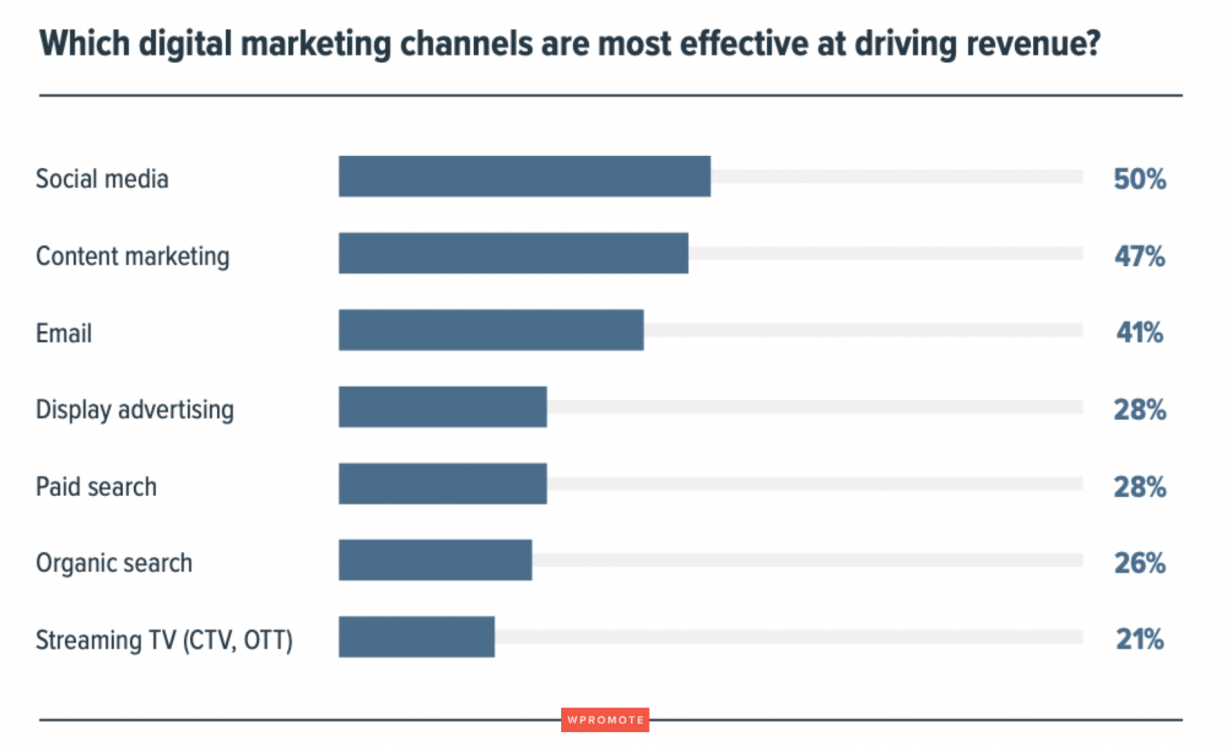
Those three channels were consistently listed as the biggest revenue drivers, regardless of the size of the business.
But the story gets a little more complicated when we dig deeper into the data. Marketers reporting less revenue growth or a decline in revenue growth placed content marketing slightly higher than social media as a top driver of revenue—as did those who reported less successful marketing strategies.
This is likely at least partially the result of a common challenge for B2Bs with longer, more intensive sales cycles: a disconnected strategy across funnel stages, and challenges around revenue attribution for upper funnel initiatives like content marketing.
Prospects and customers want a purchase journey that feels seamless, regardless of where they are in the process. That requires a full-funnel marketing strategy that spans all of your channels, and it means that your business needs integrated reporting so you can understand how your different initiatives are influencing the purchase decision.
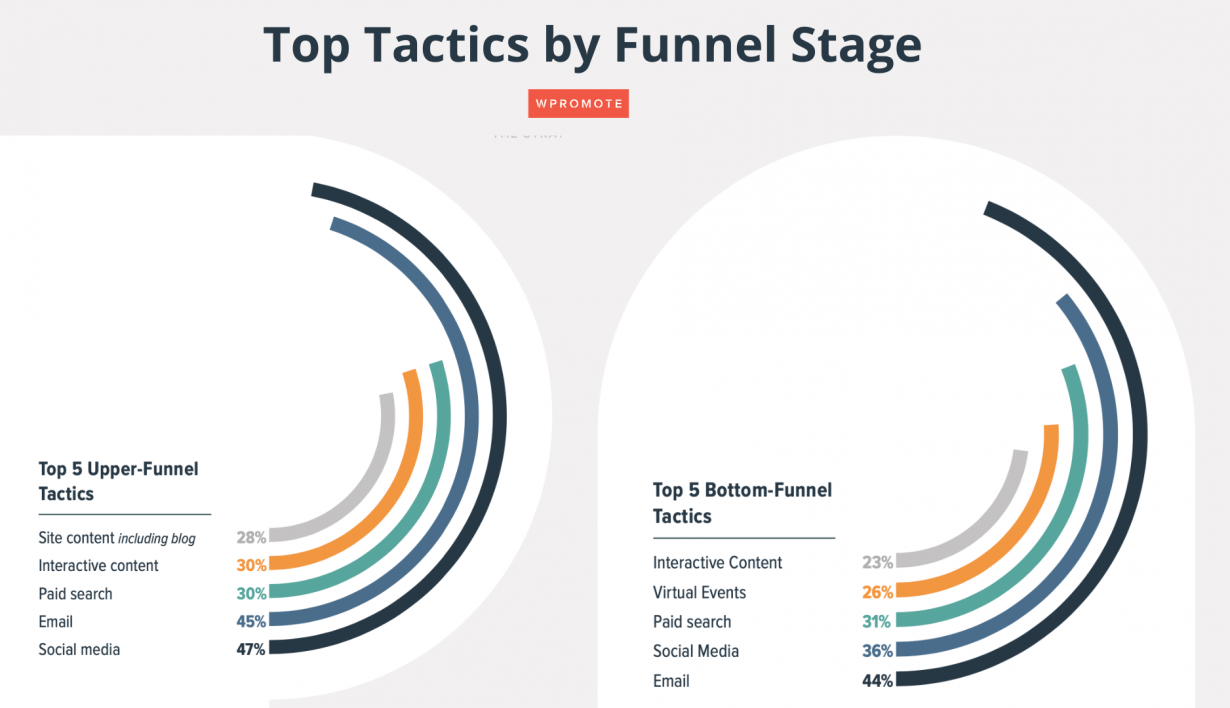
Remember: upper-funnel tactics are built to increase brand awareness, educate potential consumers, and bring new prospects into the brand’s orbit. They often help connect prospects with information they need in a non-salesy way to make a decision.
Bottom-funnel tactics focus on taking those primed, informed prospects and converting them. They often provide specific information about the brand and product to get people to take action and make a decision.
If you don’t know how the first is impacting the second, you won’t have an accurate understanding of the full impact of your marketing, even if you’re successfully driving revenue in a specific channel.
Superior customer experience differentiates the most successful B2B brands from the rest of the crowd, but it’s not top-of-mind for everyone
It’s no surprise that the top marketing objective for 51% of B2B marketers in 2022 is increasing revenue. But it is a problem that improving customer experience is only a priority for 31%, a full 20% less than revenue.
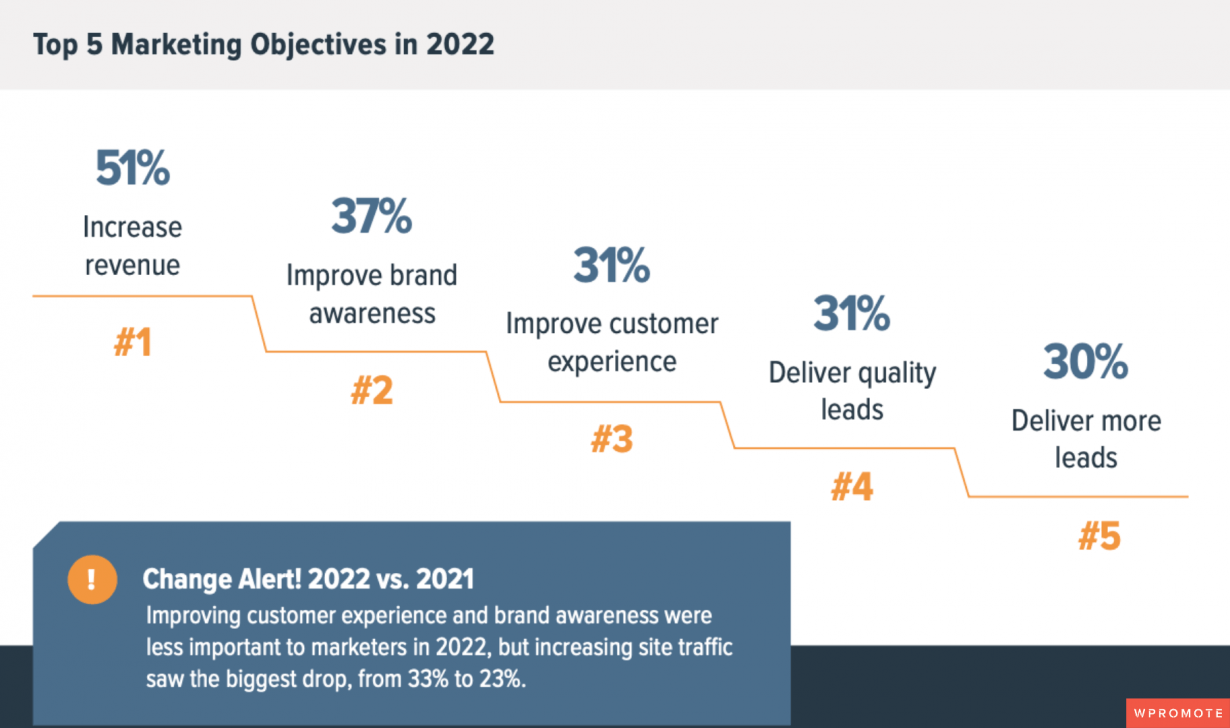
If we take a closer look, we see the #2 objective is improving brand awareness. But failing to invest in improvements in customer experience through the current period of rapid digital transformation makes upper funnel goals like awareness much harder to transform into lower-funnel goals like revenue.
Excellence in CX also correlates with a more successful overall marketing strategy. Nearly two-thirds (63%) of those with excellent customer experiences describe their marketing strategy as very successful compared to the competition.
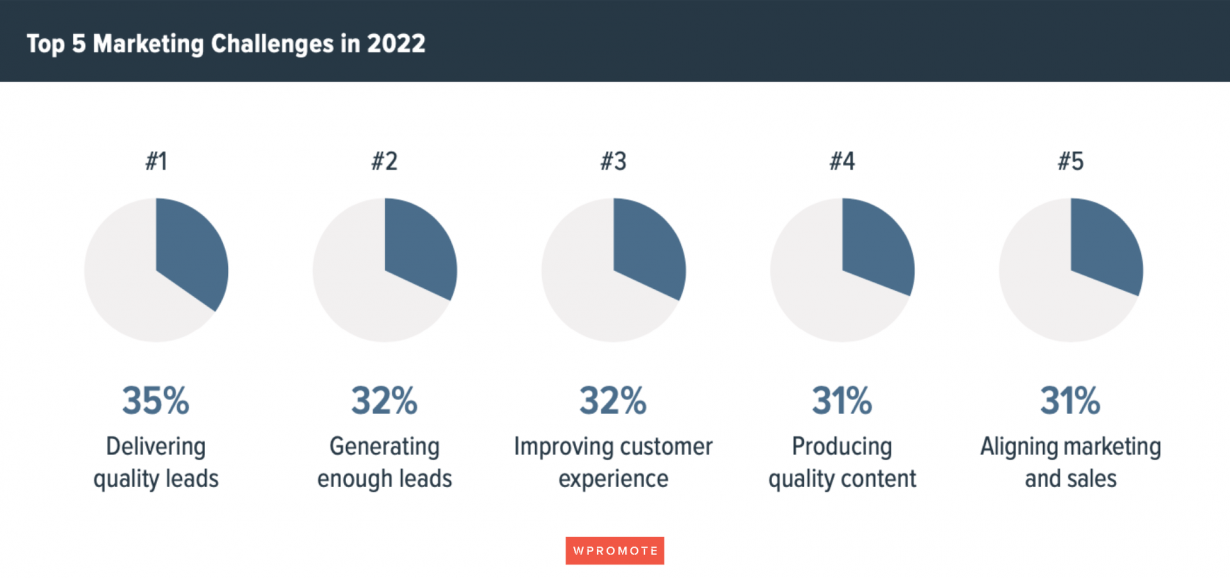
Think about it this way. If more people know your brand, but get to your site and have trouble finding the information they’re looking for, brand awareness might easily become negative sentiment. If your ultimate goal is revenue, you’re setting yourself up to fail. B2B decision-makers are pickier than ever when it comes to where they want to spend their hard-won budget; don’t give them a reason to spend it somewhere else.
B2B marketers know this is an issue; 32% noted that improving the customer experience is a significant challenge this year. To improve CX, you have to spend time, effort, and/or money. If it’s not a primary objective, you might not be allocating enough of those resources to make a meaningful difference, leaving an opening for the competition.
So what’s the secret to great CX?
We found that 48% of B2Bs with excellent customer experiences say that they are currently prioritizing first-party data collection and utilization in campaigns, while just 17% of other marketers are focused on first-party data.
That’s a big tell; first-party data isn’t just important because it will help your brand stay compliant with increasing privacy restrictions without negatively impacting performance. It also unlocks insights into your customers that drive a better overall experience.
Marketing budgets are on the rise across the board, but best-in-class B2B marketers are likely to increase their advantage over the competition
Three-quarters of B2B marketers expect budgets to increase, but 62% are predicting only moderate increases, likely as a result of the current uncertain economic climate. We predict most are likely to retain and even grow current programs but are probably wary of new initiatives that require more ambitious spending.
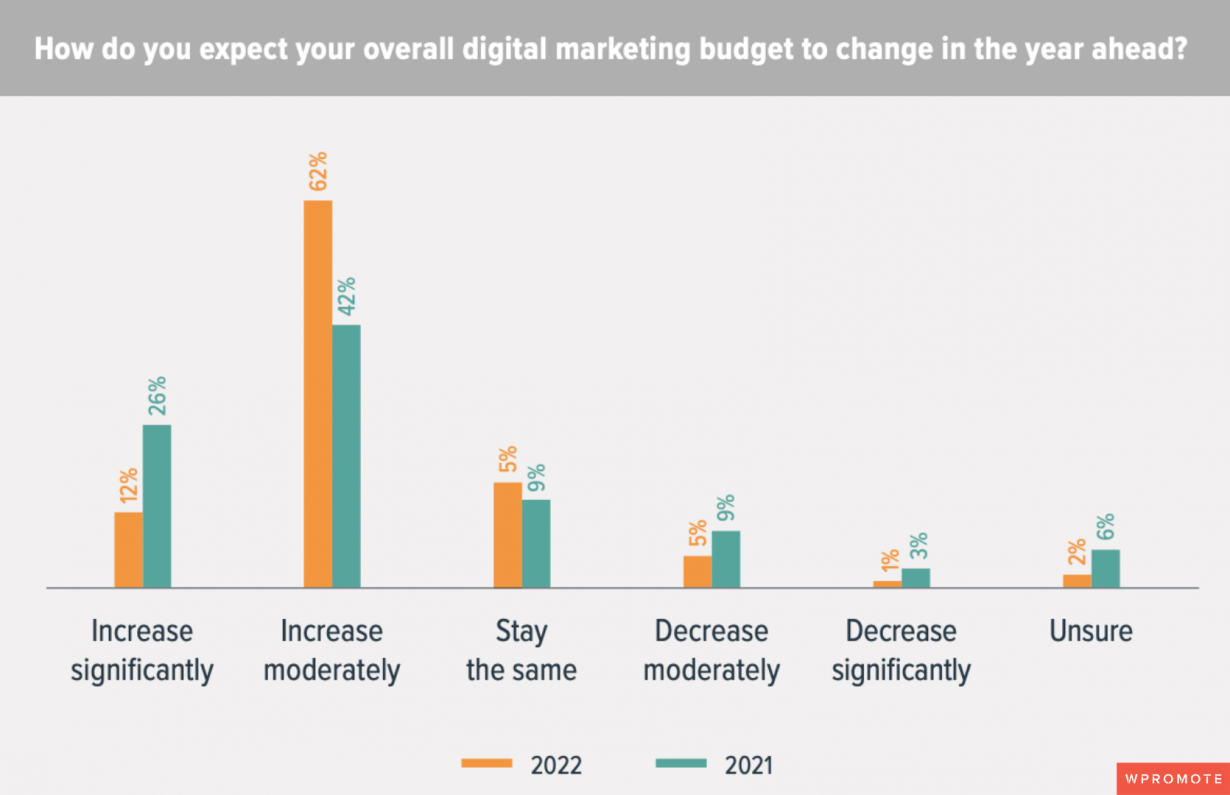
Execs, however, seem markedly less anxious; 79% of marketing execs expect budgets to increase and 27% think that increase will be significant, while exactly 0% of leaders think lower budgets are likely.
Year-over-year, marketers remain steady in their expectations for available spend in particular channels, earmarking social media (52%), content marketing (44%), and paid search (32%) as most likely to see budget increases.
Once again, B2B marketing leaders indicated slightly different priorities: 45% predict social media budgets are likely to increase vs. 52% of marketers overall. Execs were more likely to point to email as the most important channel for revenue.
But the biggest difference we saw was between the B2B median and the best-in-class marketers; a full 90% of marketers at top-performing brands predict that budgets will go up, with a full 28% forecasting a significant increase. That means they’ll be funded to keep outpacing the rest of the field—but we can learn from where they’re spending how to join that top tier.
42% of top marketers (vs. 34% of marketers overall) are shifting their focus to digital channels vs. outbound sales, a key indicator of digital transformation maturity. Paralleling that change, 28% of our best-in-class segment is moving away from lower-funnel demand generation to integrated full-funnel campaigns, against 19% of marketers overall.
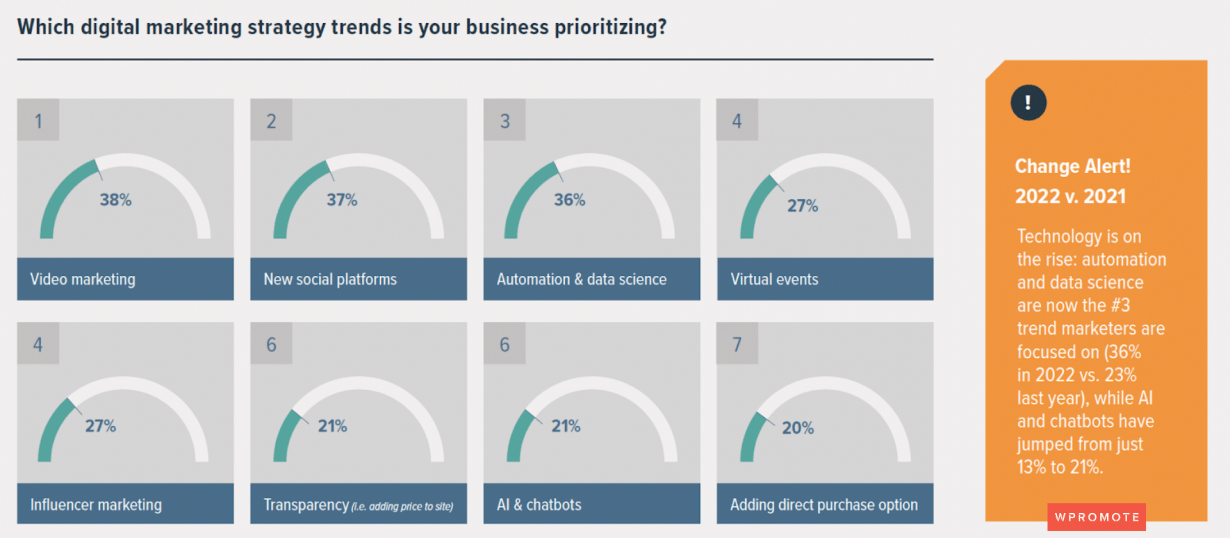
They’re also embracing streaming TV opportunities, investing in technology and automation, and incorporating virtual events and podcast advertising into their marketing at much higher rates than the rest of the field.







Responses